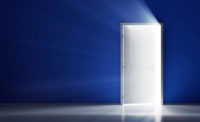Access: Types, Benefits, Restrictions
While maintaining the integrity of a secure space, one lost or missing key would require the lock to be replaced and new keys issued. For this reason, technology has evolved into sophisticated computerized electronic access control systems.

Diversity of Benefits and Goals
The most basic function of the access control system (ACS) is to control access to protected assets. An additional benefit of ACS is managing asset access. More than permitting or denying entry, it creates management information. Supervisors or management staff can restrict employees and times of entry with this level of sophistication. The issuance of a “credential” to people requiring access to a protected space is the foundation of the system.“Credential” is an industry term used to describe a type of electronically recognized key to grant access. A credential is presented to an electronic reader that gathers information stored on the credential and compares it to preset parameters and information stored in the ACS computer. Permission is granted to electronically unlock the door if the credentials match the ACS database. Credential readers and the credential utilize a wide range of technologies.
Hollerith is among the oldest technologies, dating back well over 100 years. The reader passes light through a hole pattern in a card, or electronically by metallic tabs making contact through the holes. Unfortunately, cards with hole patterns can be duplicated quite easily, thus their use in a high security application is not advisable.
Keypad devices use a series of assigned numbers commonly referred to as a personal identification number or PIN. This series of numbers is entered into the keypad, which in turn is matched to the numbers stored in the ACS. By itself, this technology does not offer a high level of security since a PIN can be stolen by even casual observation.
However, keypads can be effective when used in combination with another credential reading technology. Adding an additional layer of credential requirements increases security control.
Magnetic stripe readers read an oxide-coated plastic, which is magnetically sensitive and bonded to a plastic card. Typically the oxide stripe contains three magnetic tracks of alphanumeric data bit strings of varying lengths. The magnetic stripe reader reads the information on the magnetic tracks by the use of magnetic read heads positioned to read one or more of the three tracks of information. The magnetic stripe is subject to frequent rubbing and contact with the read head. This direct contact between the card and the read head will cause wear.
Magnetic stripe readers are sensitive to dirt dust and adverse environmental conditions, which therefore limit the application. Additionally, magnetic stripe cards are sensitive to magnetic fields, which can erase encoded information. They also are subject to duplication with the use of a computerized track reader and a magnetic stripe encoder. Considering the physical drawbacks of the card, the technology is quite reliable and inexpensive.
Barcodes are placed on a plastic card with information printed in the form of a set of thick and thin black lines separated by varying thickness white spaces. Barcodes are susceptible to reproduction by the use of a computer scanner or photocopier.
Proximity technology has become widely popular thanks to the drop in prices fueled by competition among manufacturers. Proximity technology basically consists on a plastic card or token that is embedded with an electronic chip. The chip is programmed with a unique alphanumeric code. The card also is embedded with a small coil of wire that acts as an antenna. The code is read from the card when the card is presented within the range of a magnetic field generated from the reader. The magnetic field from the reader excites the magnetic coil embedded in the card and transmits the coded information to the reader.
Read range is limited to the electromagnetic field created by the reader. Extended read range can be accomplished by the use of a card with embedded battery technology. A battery can supply power to the coil, which increases its transmission distance. The disadvantage of an embedded battery of course is the battery’s limited life span and the additional thickness it adds to a card. Proximity technology is one of the most secure technologies available in electronic credentials. The readers and credentials are increasingly being miniaturized while maintaining a reasonable read range for the user.
Access controls offer a wide variety of applications, levels of security, management information and longevity, so it is important to understand the access control objective. The objective of the facility manager is to match the level of security control and management information to the asset priority level. In addition, the access control device must be suited for its operating environment. Selection of the access control system should not be taken lightly. It must perform the intended security objective, provide high reliability and enable integration into the overall security program.
Looking for a reprint of this article?
From high-res PDFs to custom plaques, order your copy today!






.jpg?height=200&t=1705430498&width=200)
